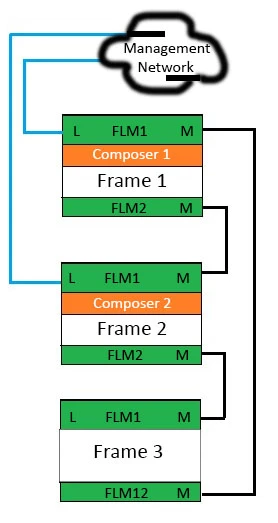Which question should you ask?
Asking whether their application workload benefits from persistent memory is the most forward-looking question. The c7000 and Synergy systems both support enhanced security and servers with significant memory footprints, but Synergy offers advanced features like persistent memory that can provide substantial performance benefits for specific application workloads. This aligns with helping the customer prepare for future needs and technologies.
Which feature should you highlight to overcome the objection?
What should you explain to the customer regarding SAS connectivity?
SAS connectivity in HPE Synergy systems is supported only in certain bays, specifically Interconnect Module bay 1 and 4. Hence, SAS connectivity can only be used in the first fabric, meaning it should not be utilized for any other type of connections. This makes option D the correct answer. This way, it ensures a clear understanding of the system's configuration limitations and prevents potential issues with using the SAS connectivity incorrectly.
Which tool should you recommend?
The most appropriate tool for inventorying and updating firmware across a large environment with various server models and generations would be SUM (System Update Manager). SUM is specifically designed to discover installed hardware, identify current versions of firmware, drivers, and system software, provide update recommendations, and apply updates efficiently to minimize operational impact. While iLO Amplifier Pack, OneView, and Intelligent Provisioning have their own useful features, SUM is best suited for this specific task of inventory and firmware updates across a diverse set of servers.

You are installing three Synergy frames for a customer PoC in the configuration shown. The composer is unable to discover the frames.
What is the most likely cause of the problem?
The management ring in a Synergy environment should be connected using the FLM (Frame Link Module) link ports. In the exhibit, the FLM links are not connected to form a complete management ring between all frames. This connection is essential for the composer to discover and manage the frames effectively.